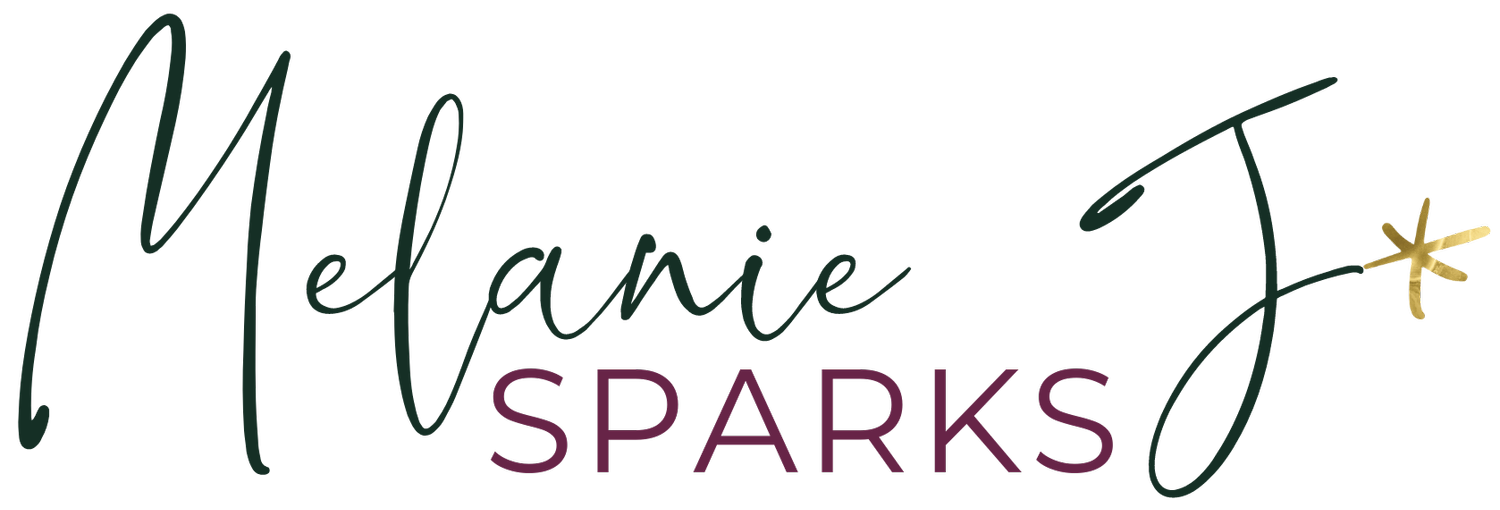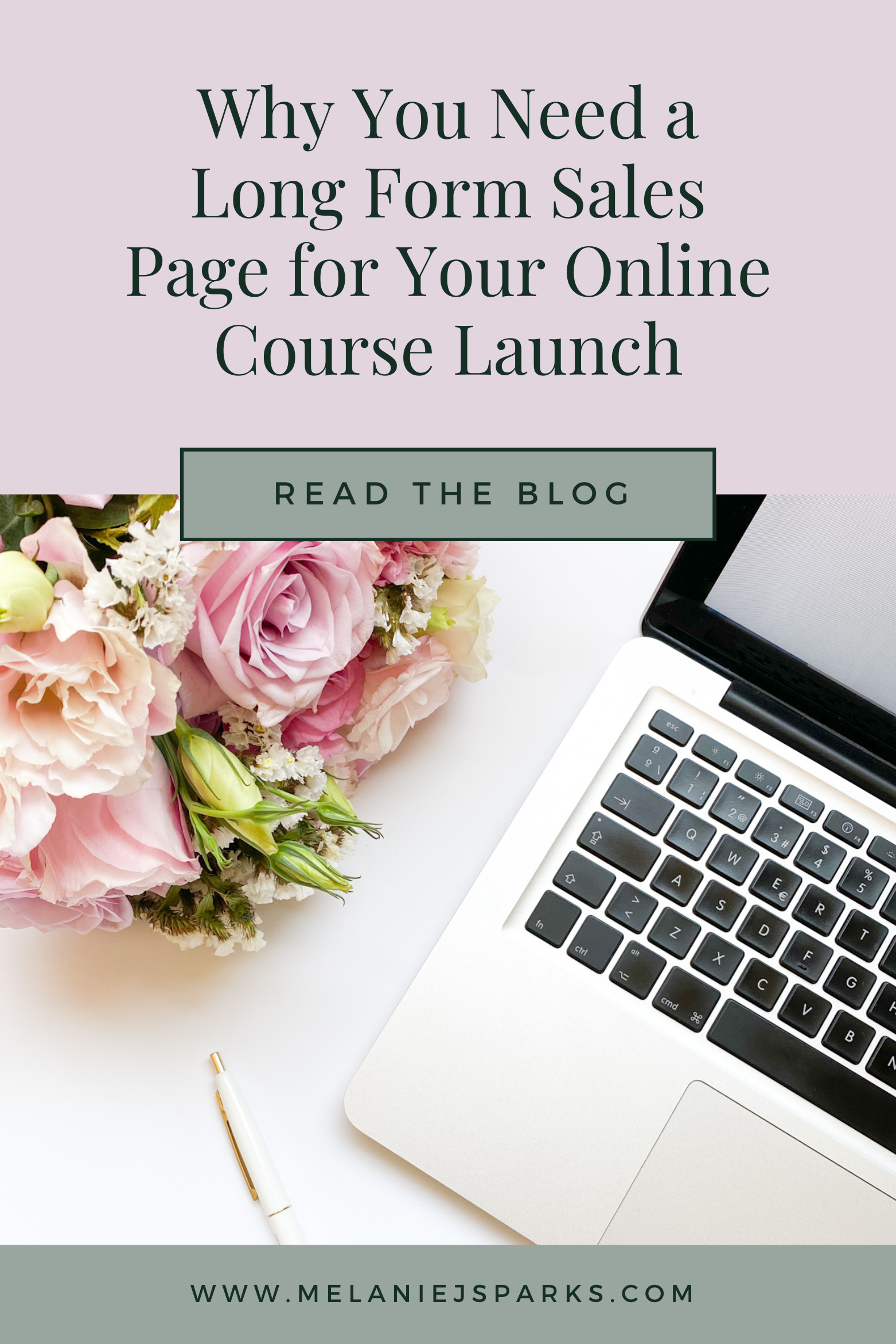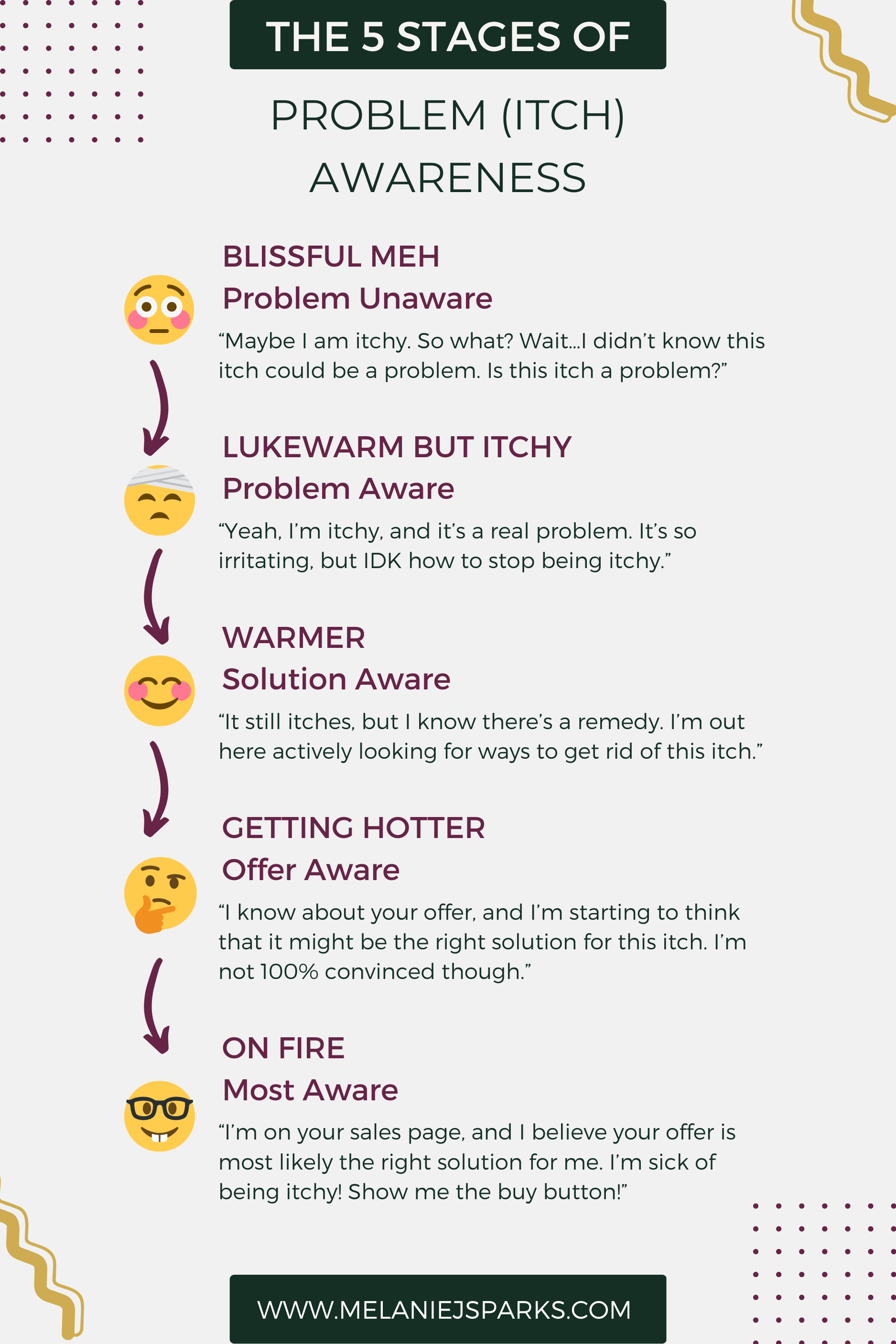Why You Need a Long Form Sales Page for Your Online Course Launch
If you’re an expert, coach, or course creator, and you have an amazing online course or program to sell, you probably know you need a long form sales page.
Still, you might resist and ask:
“Do I even need a sales page for my offer? It’s not that expensive.”
“Can’t I just send them straight to the checkout page?”
“Does my sales page have to be so freakin’ long? UGGGGGH.”
I hear you. As a launch copywriter, I get these questions all the time.
The good news is, I’m going to answer all of your burning questions about whether or not you need a long form sales page for your online course…
CAN YOU LAUNCH YOUR DIGITAL COURSE WITHOUT A SALES PAGE?
Short answer: Of course you can.
Do I recommend it?
In most cases, no.
I can’t blame you for trying to avoid it. Maybe you dread writing sales copy. The blinking cursor makes you queasy. Or you hate those never-ending-scroll sales pages, and you bet others do too.
And you’ve gotten this idea that no one reads sales pages anymore from somewhere.
You may have heard an online entrepreneur bragging that they didn’t have a sales page, and they made a boatload of cash on their last launch.
I’ve even seen words like this ON A SALES PAGE: “You don’t need a sales page to sell your offer!” (Wait. What? Is this some “inception” type of deal? How does that work again?)
Not everyone has a long form sales page for their offer. But the fact is, they’re still selling.
Whether it’s in the DMs, a social post, an email, or on a sales call: They’re still having the sales conversation and still using the same elements found in conversion copy.
If not having a sales page is working for you, cool.
For the other 99% of us, keep reading to learn exactly why you need a sales page.
THE CASE FOR A LONG FORM SALES PAGE
If your offer is low-ticket, you don't even need a sales page, right? Maybe you can bypass all the chit-chat and usher them to the checkout line.
Sure, if your audience is very warm to hot — then you might get away with sending them straight to cart for a low ticket offer.
They already know, like, and trust you and your brand. They’ve bought from you before. You’ve done your homework, and you know this offer solves a big problem for them. Bingo.
But, if your audience is cold to lukewarm (in other words, they don't know you), then you need an actual sales page.
The price of your offer matters far less than the RELATIONSHIP you have with your could-be buyer.
How do people form relationships?
Initially, by meeting, making a connection, and having conversations.
You don’t meet someone and immediately ask for those credit card digits.
The role of your sales page is to make a connection, have a conversation with your ideal customer, and start the relationship.
Your copy has the best chance of converting when it meets the prospect where they are right now — in both their stage of awareness and readiness to solve their problem.
When your copy joins the conversation already happening inside your prospect’s head, it’ll have them thinking “Wow, that sounds like me.” or “Did you read my mind?”
But how do you know what they’re thinking?
You ask! You do your research before you write your copy.
First, you’ll want to figure out where they stand in regard to the problem your offer helps them solve — AKA their stage of awareness. (Spoiler alert: stage of awareness also affects the length of your sales page.)
Definition of Stage of Awareness: How aware your prospect is about the problem, general solutions, your specific offer, and your offer's potential to solve their problem and help them get the results they want.
Do they even know they have a problem? Have they identified it? Are they convinced it’s a problem worth solving? Are they ready to solve the problem?
Even if someone is unaware of the problem, or doesn’t think they’re ready to solve the problem yet, they may still buy your offer.
It’s your sales copy that will move them ahead in the buying journey — or leave them stranded on the side of the road.
Here’s a quick overview of the 5 stages of problem awareness:
How does knowing their stage of awareness play out on your sales page?
Let’s say Jim has an itch, and he’s not too worried about it. It’s there, but he doesn’t consider it a problem.
Jim is scrolling through his Facebook feed — right past an ad for a brand new way to cure an itch. It catches his eye. He scrolls back up and clicks through to the landing page.
When he gets to the sales page, he’s going to need a hook that helps him recognize that his itch is a problem.
In fact, it’s not just a problem, it’s a problem worth solving — right now: “Could That Itch Be a Sign of a Bigger Problem?”
If Jim already knows the itch is a problem, your sales page can hook him with the problem: “Instantly Get Rid of that Itch That’s Driving You Up the Wall!”
Now, he knows he’s in the right place — a place for people with an itch. Then you’re going to introduce Jim to possible solutions, including yours.
So, can you sell to people who don’t even know they have a problem?
Yes, you can. My suggestion is to form a relationship with the problem-unaware at the TOP of your funnel — your freebie or your low-ticket offer works well here.
Then let your funnel do its job by moving your ideal customers further along to the bottom of the funnel — where they’ll be introduced to your higher ticket/higher commitment/bigger transformation offers.
If I’ve convinced you that you do need a long form sales page in order to take your soon-to-be buyer on a conversion journey, you might still want to know...
“How long should my page be?”
There really isn’t one right answer to this question. Sorry.
But, as a general rule: The less aware your prospect is and the colder your audience, the longer your sales page should be.
Yes, even if your offer is $27!
We’re not talking 10K words here. The sales page copy should take the right prospects on a complete conversion journey, from their starting point to purchase, hitting on all of the right proof points along the way. If it ends up being 2,000 words or 4,000 words, it’s okay.
“Can I ever just send them to the cart?”
Yes, you can. Here’s my take:
If you’ve just wrapped your genius live webinar, and your viewers are feisty, by all means send them to cart to get their fast-action bonuses.
If you’re on the last day or two of your launch, and your audience is all warmed-up and toasty, you can absolutely send them straight to that checkout page.
In the end, it’s your launch. The best way to find out what your audience prefers and what works for you is to experiment and test.
HEY, I'M MELANIE SPARKS.
I'm a conversion copywriter for digital course creators, experts, and service providers who have hit 6 figures or more and want to scale by staying in their zone of genius.
I help you go from Offer to Empire™ by nailing your offer, messaging, and strategy, then layering on the conversion copy.
Want to know how we can work together? Click here.





